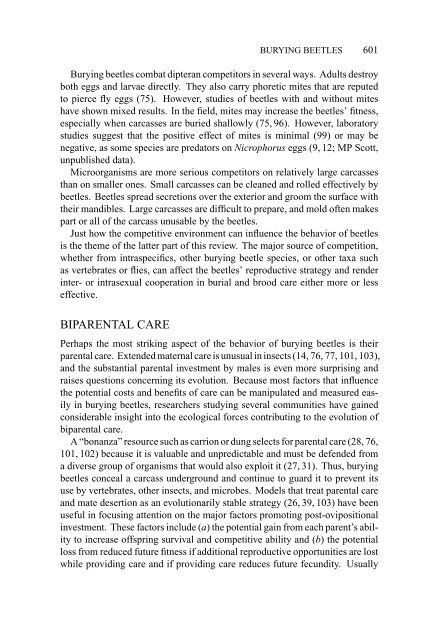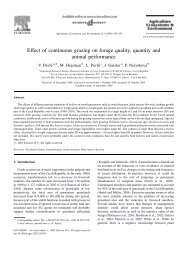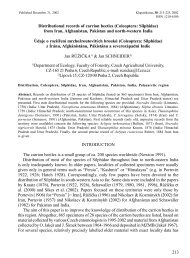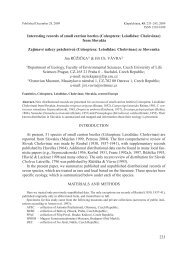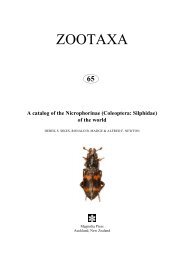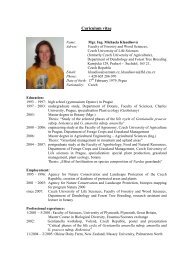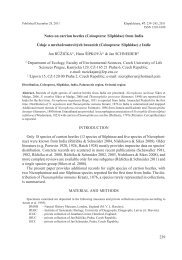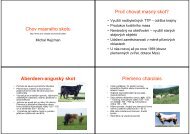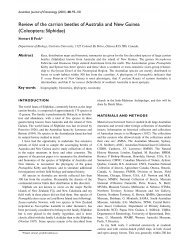THE ECOLOGY AND BEHAVIOR OF BURYING BEETLES
THE ECOLOGY AND BEHAVIOR OF BURYING BEETLES
THE ECOLOGY AND BEHAVIOR OF BURYING BEETLES
You also want an ePaper? Increase the reach of your titles
YUMPU automatically turns print PDFs into web optimized ePapers that Google loves.
<strong>BURYING</strong> <strong>BEETLES</strong> 601Burying beetles combat dipteran competitors in several ways. Adults destroyboth eggs and larvae directly. They also carry phoretic mites that are reputedto pierce fly eggs (75). However, studies of beetles with and without miteshave shown mixed results. In the field, mites may increase the beetles’ fitness,especially when carcasses are buried shallowly (75, 96). However, laboratorystudies suggest that the positive effect of mites is minimal (99) or may benegative, as some species are predators on Nicrophorus eggs (9, 12; MP Scott,unpublished data).Microorganisms are more serious competitors on relatively large carcassesthan on smaller ones. Small carcasses can be cleaned and rolled effectively bybeetles. Beetles spread secretions over the exterior and groom the surface withtheir mandibles. Large carcasses are difficult to prepare, and mold often makespart or all of the carcass unusable by the beetles.Just how the competitive environment can influence the behavior of beetlesis the theme of the latter part of this review. The major source of competition,whether from intraspecifics, other burying beetle species, or other taxa suchas vertebrates or flies, can affect the beetles’ reproductive strategy and renderinter- or intrasexual cooperation in burial and brood care either more or lesseffective.BIPARENTAL CAREPerhaps the most striking aspect of the behavior of burying beetles is theirparental care. Extended maternal care is unusual in insects (14, 76, 77, 101, 103),and the substantial parental investment by males is even more surprising andraises questions concerning its evolution. Because most factors that influencethe potential costs and benefits of care can be manipulated and measured easilyin burying beetles, researchers studying several communities have gainedconsiderable insight into the ecological forces contributing to the evolution ofbiparental care.A “bonanza” resource such as carrion or dung selects for parental care (28, 76,101, 102) because it is valuable and unpredictable and must be defended froma diverse group of organisms that would also exploit it (27, 31). Thus, buryingbeetles conceal a carcass underground and continue to guard it to prevent itsuse by vertebrates, other insects, and microbes. Models that treat parental careand mate desertion as an evolutionarily stable strategy (26, 39, 103) have beenuseful in focusing attention on the major factors promoting post-ovipositionalinvestment. These factors include (a) the potential gain from each parent’s abilityto increase offspring survival and competitive ability and (b) the potentialloss from reduced future fitness if additional reproductive opportunities are lostwhile providing care and if providing care reduces future fecundity. Usually


